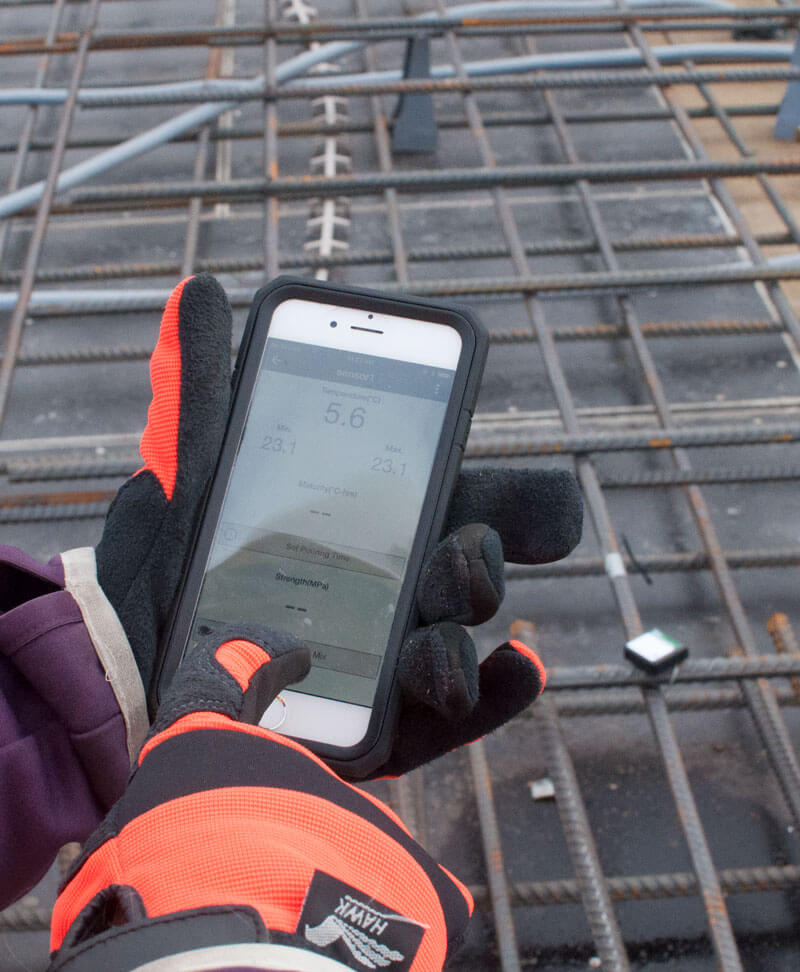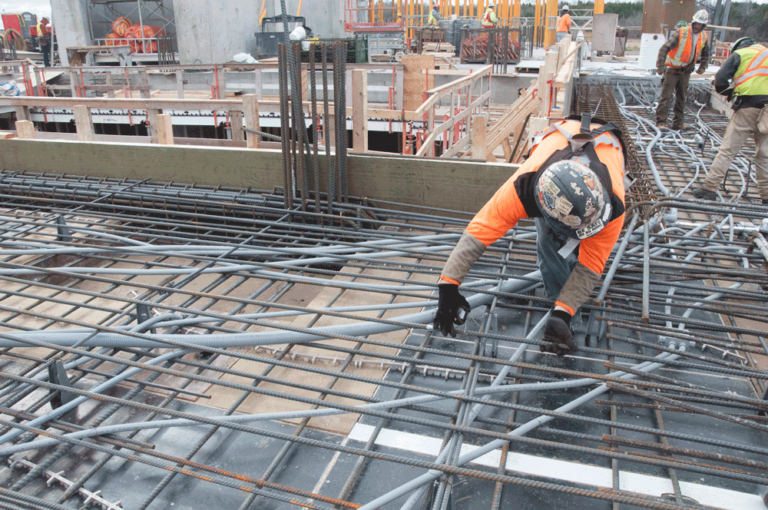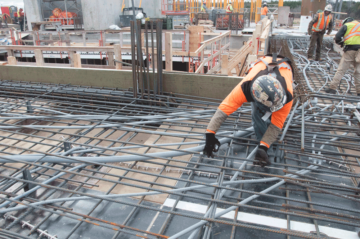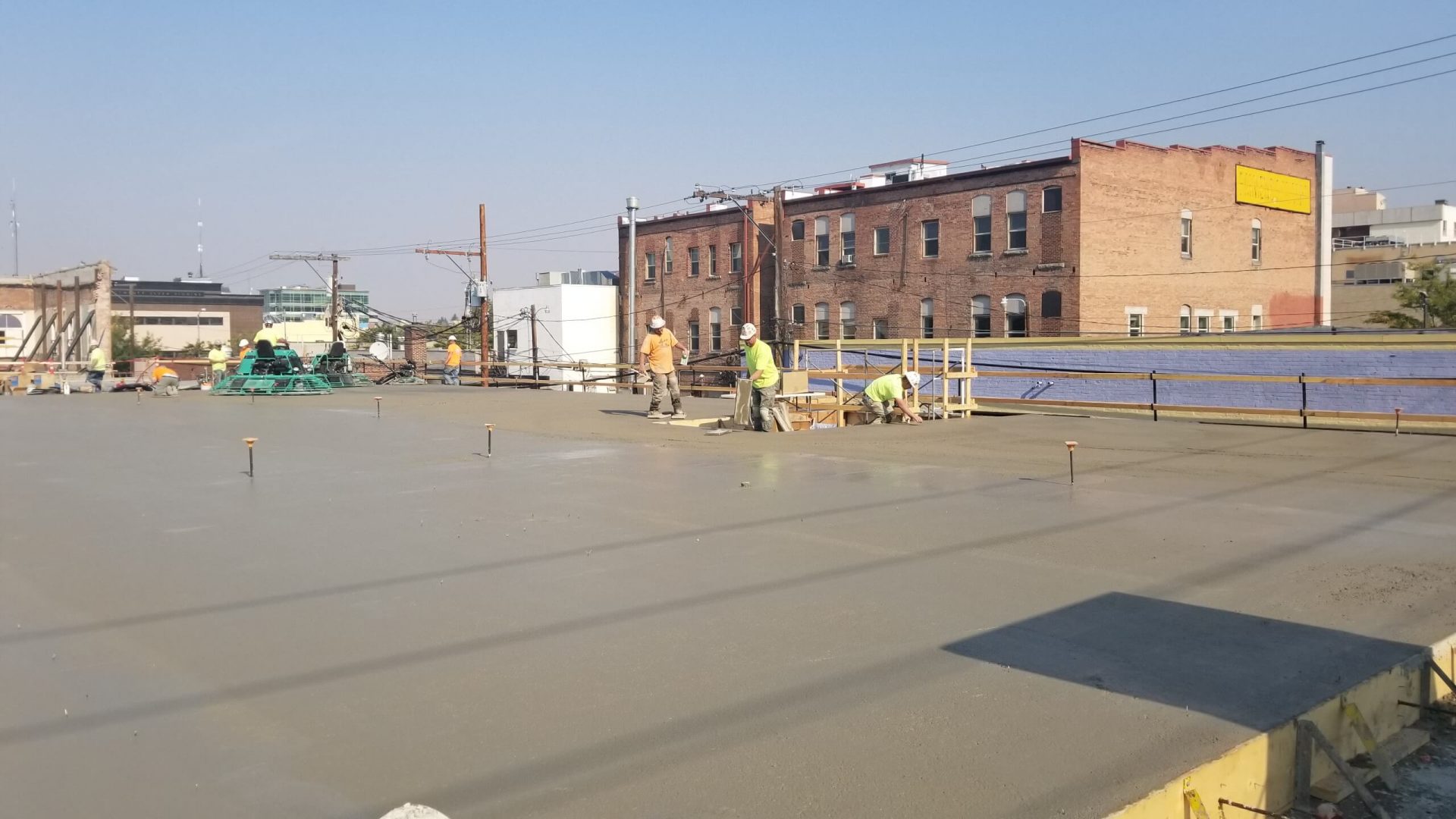Optimizing Jobsite Workflow in Cold Temperatures
For many construction companies it is approaching the time of the year when dropping temperatures play a massive role in your workers day to day operations, especially where concrete is involved. To avoid compromising concrete production and placement, specific procedures need to be followed to ensure strength development. Concrete gains strength more slowly in colder temperatures. For this reason, accurate and consistent temperature monitoring of your in-situ slab is important so that the quality of your structure is optimal.
Explore 12 Futuristic Technology Trends Solving Concrete's Biggest Challenges.
What is Cold-Weather Concreting?
“Cold weather concreting” is defined by the American Concrete Institute (ACI) 306: Guide to Cold Weather Concreting as the procedures relating to the placing, finishing, curing, and protection of concrete during cold weather. Monitoring temperature and meeting cold weather specifications is especially important during the winter months as well as early spring when warm days alternate with cold nights below freezing temperatures. ACI 306 defines “cold weather” as three or more consecutive days of low temperatures, specifically outdoor temperatures below 40 degrees F (4 degrees C) and air temperature below 50 degrees F (10 degrees C) for more than any 12-hour period.
Techniques to Control Concrete Temperature and Strength Development
Many techniques are in use to ensure optimal strength gain during colder temperatures. This includes; using heaters and protective blankets to cover concrete for the purpose of retaining heat generated by the slab itself and decrease the temperature difference between the surface and inner parts of the in-situ element.
ACI 306R, “Guide to Cold Weather Concreting,” instructs managers to “[t]ake advantage of the opportunity provided by cold weather to place low-temperature concrete. Concrete placed at lower temperatures [40 to 55 °F (5 to 13 °C)], protected against freezing, and properly cured for a sufficient length of time, has the potential to develop higher ultimate strength and greater durability than concrete placed at higher temperatures. It is subject to less thermal cracking than similar concrete placed at higher temperatures.”
Why Should You Care About Proper Cold Weather Concreting Practices?
If cold weather concreting practices are not followed according to specifications, you risk running into numerous issues and possibly even structural damage. Among these problems include;
- Freezing of concrete at early ages,
- Lack of required strength,
- Rapid temperature changes,
- Inadequate protection of the structure and its serviceability, and
- Improper curing procedures.
These problems can be avoided by taking these special precautions to ensure concrete temperature is maintained during the curing stages. By protecting concrete from freezing and ensuring little or no external moisture is added unless located in a heated enclosure.
7 Common Mistakes to Avoid During Cold Weather Concreting Read More!
Monitoring Concrete Temperature in Cold Weather Conditions

Not only does SmartRock make your job of monitoring temperature easier, it also allows you to know more information about your concrete than ever before. With the SmartRock app and its’ Giatec 360 desktop dashboard it is easy to check the temperature gradients of your in-situ concrete so you can ensure that the core and surface of your slabs are consistently curing. Since this information is updated in real-time you know immediately when your concrete has reached the required strength to tension, remove formwork, etc.
Learn More About SmartRock Wireless Sensors Here
*Editor’s Note: This post was originally published in August 2018 and has been updated for accuracy and comprehensiveness.








